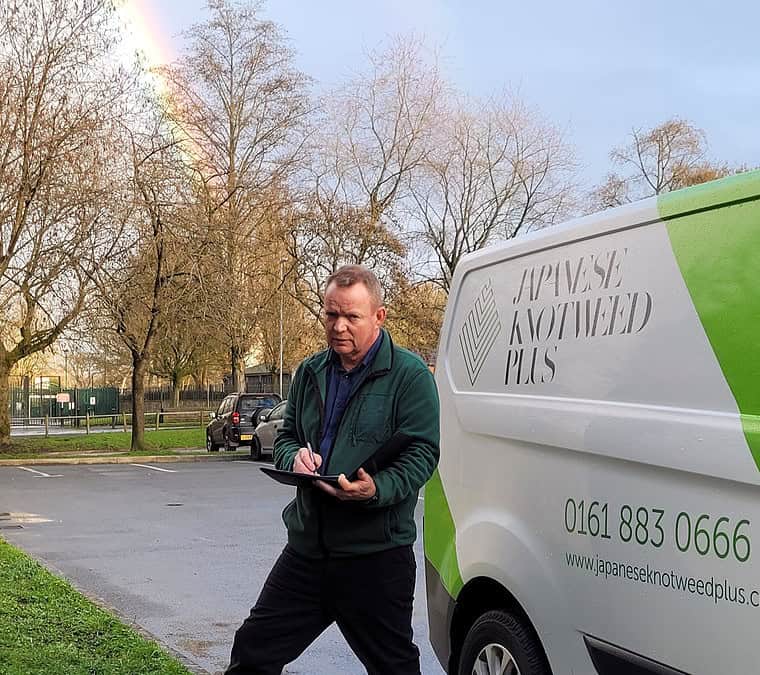Japanese Knotweed is an invasive plant species that can cause damage to properties and the environment.
Stay up-to-date on the best management techniques to prevent its spread. This article provides helpful tips and resources to help you stay informed.
Japanese Knotweed is a highly invasive plant species that is causing problems for property owners and the environment in many parts of the world. If left unchecked, this plant can cause damage to buildings, walls, and other structures, as well as disrupt ecosystems and reduce biodiversity. Therefore, it’s important to stay up-to-date on the latest Japanese Knotweed management techniques to prevent its spread and protect your property.
In this article,
we’ll explore some of the best ways to stay informed about Japanese Knotweed management techniques. We’ll cover everything from online resources and professional services to community programs and government initiatives.
- Join Online Communities and Forums
- Attend Training and Workshops
- Consult Professional Services
- Stay Informed about Government Initiatives
- Participate in Community Programs
Join Online Communities and Forums
- Find Online Communities and Forums
- Engage in Discussions
- Follow Experts
Attend Training and Workshops
- Search for Upcoming Workshops
- Attend Training Courses
- Learn from Experts
Consult Professional Services
- Find a Certified Knotweed Specialist
- Get a Professional Site Assessment
- Choose the Right Treatment Option
Stay Informed with Government Initiatives
- Look for Government Programs
- Check for Local Regulations
- Get in Touch with Authorities
Participate in Community Programs
- Join Local Conservation Groups
- Attend Community Events
- Get Involved in Restoration Projects
Join Online Communities and Forums
- Find online communities and forums that discuss Japanese Knotweed management techniques
- Engage in discussions with experts and other property owners who have experience with knotweed
- Follow experts and organizations that specialize in invasive species management
Attend Training and Workshops
- Search for upcoming training courses and workshops on Japanese Knotweed management
- Attend training courses and learn from experts in the field
- Gain hands-on experience with knotweed control methods and treatment options
Consult Professional Services
- Find a certified knotweed specialist to assess your property and recommend the best management plan
- Get a professional site assessment to determine the extent of the knotweed infestation and the most appropriate treatment
- Choose the right treatment option based on the size and location of the knotweed infestation and the severity of the damage
Stay Informed with Government Initiatives
- Look for government programs that provide information and resources on knotweed management
- Check for local regulations and laws related to knotweed control
- Get in touch with local authorities to report knotweed sightings or ask for assistance with management
Participate in Community Programs
- Join local conservation groups and community organizations that focus on invasive species management
- Attend community events and workshops on knotweed management and restoration
- Get involved in restoration projects that aim to control and eradicate knotweed infestations in your area
FAQs:
Q: What is Japanese Knotweed? A: Japanese Knotweed is a highly invasive plant species that can grow up to 10 feet tall and spread rapidly through underground rhizomes. It is native to East Asia but has been introduced to many parts of the world, including Europe, North America, and New Zealand.
Q: Why is Japanese Knotweed a problem? A: Japanese Knotweed is a problem because it can cause damage to buildings, walls, and other structures, as well as disrupt ecosystems and reduce biodiversity. It also has the potential to reduce property values and make it difficult to obtain mortgages or insurance.
Conclusion:
Staying up-to-date on Japanese Knotweed management techniques is crucial to prevent the spread of this invasive plant species and protect your property and the environment. By joining online communities and forums, attending training and workshops, consulting professional services, staying informed with government initiatives, and participating in community programs, you can learn about the latest methods and best practices for controlling knotweed infestations.
Remember that controlling Japanese Knotweed can be a long-term process, and it’s important to work with professionals who have experience in knotweed management. With the right knowledge, resources, and support, you can effectively manage and control Japanese Knotweed, and help protect the environment and the communities in which we live.
